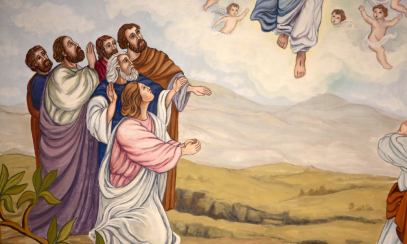How Can You Know What the Bible Really Means?
Father Robert Schoenstene, S.S.L., is Assistant Professor, Department of Biblical Exegesis and Proclamation, University of Saint Mary of the Lake/Mundelein Seminary. Elizabeth Nagel, S.S.D., is a Professor in the Department of Biblical Exegesis and Proclamation, University of Saint Mary of the Lake/Mundelein Seminary.
Q: Can biblical texts have multiple meanings? If yes, how are we to understand the text?
A: Professor Nagel: The question of multiple meanings brings up the matter of the different “senses” that biblical texts can have. For most people, the most interesting sense seems to be the “spiritual” sense – whatever they mean by that. If you ask 30 people to define the spiritual sense, you will often get 30 different answers. In the church, too, the meaning of the “spiritual” sense has varied over time.
The early church fathers recognized two senses in biblical texts, a literal and a spiritual sense. But since their chief context for interpreting Scripture was the liturgy, they emphasized the latter and understood it as the Christological sense of the text, i.e., the text’s meaning when read in light of the mystery of Jesus’ death and resurrection and the new life that flows from it.
Later, Thomas Aquinas taught that the most important sense and the starting point of interpreting the Scriptures was the literal sense, i.e. the original meaning of the text for those who heard it. All other senses, including the spiritual, were based necessarily on the literal sense and flowed from it. This meant that any spiritual sense could not contradict the literal sense, but that it must somehow be in line with or develop it.
Father Schoenstene: Biblical texts take on different meanings depending on the historical and cultural context of the community reading them. For example, when Isaiah speaks of the “Suffering Servant,” the Jews of Isaiah’s time would not have understood this as being messianic in nature. Rather, the “Suffering Servant” could have been understood as Israel itself. In contrast, this same text takes on a fuller meaning in the New Testament because of God’s revelation to humanity of himself through the Word, i.e. Jesus Christ.
This is not to suggest the continuum of the truth in the texts is absent, even though the application of the texts may change. The psalms are true though the “meaning” may change through their use in, for example, the liturgy versus private prayer.
What does that symbol mean?
The sand dollar has been used in modern times as a reminder of the major events in the life of Christ. On one side of the shell appears a flower shape roughly resembling a poinsettia, a reminder of Jesus’ nativity. The shell is pierced with four small holes and one larger one, signifying the four nails and a spear that pierced his body. On the other side is another flower shape resembling a lily, a reminder of his resurrection. A broken shell reveals five tiny bones that resemble doves, a reminder of his Holy Spirit by which he is present with us today.
Name that church doctor
Q: The honorary title, “doctor of the church,” is bestowed by the pope in recognition of a person’s contribution to the understanding and interpretation of Sacred Scripture and the development of Christian doctrine. See if you know which “doctor” said this…
““He prays best who does not know that he is praying.”
A: St. Anthony of Padua (1195 – 1231)
St. Anthony of Padua is the evangelical doctor. He became a member of the Order of Friars Minor (Franciscans) after seeing the bodies of the first Franciscan martyrs, who had died in Morocco, being conveyed into a church. From that moment, his one desire was to preach and suffer for Christ’s sake.
He taught theology in various places, but was best known for his oratory. He was a gifted preacher and he worked many miracles. He also labored tirelessly to combat the vices of luxury, avarice, tyranny, and heresy (he actually earned the title of Malleus hereticorum, or Hammer of the Heretics).
He is the patron saint of Portugal, searchers of lost items and travelers.
His feast day is June 13
Pilgrimage destination of the month – Lisieux, France
Every year, Catholics from around the globe travel to religiously significant locations in order to deepen their understanding and appreciation for the Catholic faith, to venerate Mary and the saints, to ask for intercessory prayers and to express gratitude. Here is just one of the many places you might want to make a pilgrimage.
Lisieux was founded more than 2,000 years ago. The town was losing its religious and economic importance until the turn of the 20th century when France, and later the whole world, discovered the life and message of a young Carmelite, Sister Theresa of the Child Jesus. The town soon became an important shrine of spirituality.
About 100 miles northwest of Paris, in the Normandy region, Lisieux is second only to Lourdes in terms of number of pilgrims received in France. Nearly destroyed in World War II, Lisieux currently receives more than 2 million pilgrims a year and the number continues to grow.
St. Therese was born on Feb. 2, 1873, in Alençon. Therese lived in Lisieux for 10 years before entering the Carmelites in 1888 at the age of 15. In Therese’s memoirs, Story of a Soul, she explains her “little way” to holiness. This “little way” consists not of extraordinary sacrifices, but of the monotony of little acts offered to God through love. Her memoirs were published in more than 60 languages and she quickly became known and venerated throughout the world. In 1925, she was declared a saint.
Notables:
• The Carmelite convent that St. Therese entered at age 15 and where she lived a cloistered life of obscurity until her death at age 24.
• Les Buissonets (the little bushes) was the home of St. Therese in Lisieux prior to her entry into the convent. It is now a museum.



